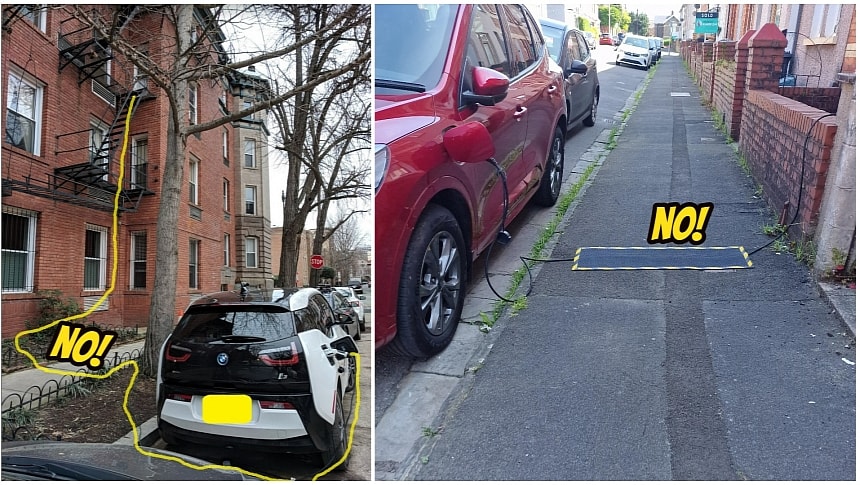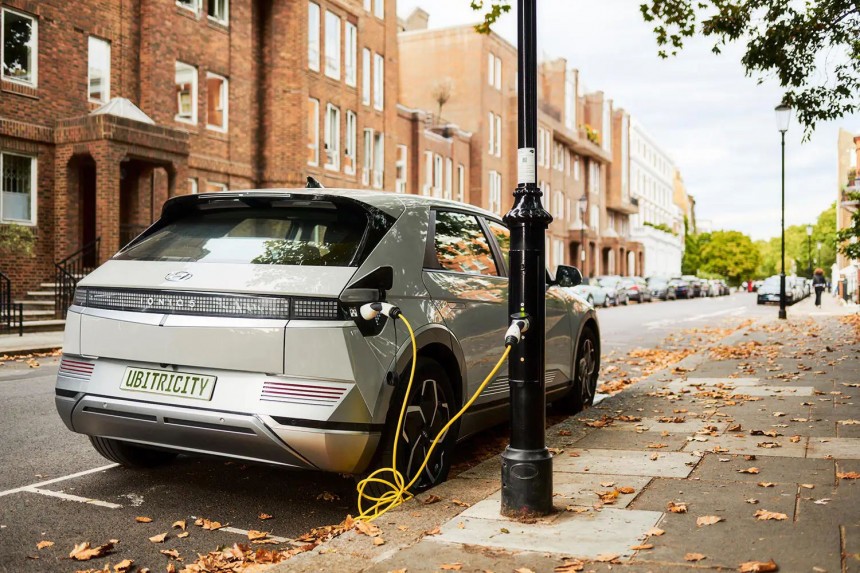We have previously said that owning an all-electric vehicle makes the most sense for consumers who can charge it at home, at work, or somewhere else for free. Positive local environment impact aside, a car remains a means of personal transport that costs money. Battery-powered vehicles are already pricier than some conventional rides that, thank God, still survive this weird market we're in. But if you also have to pay for expensive kWh at DC fast chargers, you're not getting anywhere.
Especially since some locations have started charging customers parking fees on top of the electricity cost. Everyone wants to make a buck off EV owners, and some entities are, sadly, taking it to a whole other level.
For some Australians, it's even worse now. Many EV buyers who live in apartments want to take full advantage of the potential of their zero-tailpipe emission rides. So, to avoid paying a lot for electricity at DC fast chargers, they use an extension cord to plug in their cars overnight.
That's smart for two reasons. One, they can wake up to an almost full battery in the morning. Two, slow charging protects the battery cells from accelerated degradation. This prolongs the battery life and helps maintain the EV's resale value.
However, pedestrians don't like that EV owners are putting cables on the sidewalk, even though many are using walkway covers or outdoor protectors to allow wheelchair users, parents with strollers, or kids with bikes to safely cross over the cables and to stop people or animals from damaging them. After all, a live cable can electrocute someone if it doesn't have a smart cut-out option.
In Sydney, authorities have already notified EV owners who charge their EVs via an extension cord that they need to stop. If they continue to send cables through their windows and place them on "public land," then they will be fined AUD 330 (USD 220), according to Yahoo Australia.
Drivers have been saying for quite a while that Level 2 charging infrastructure needs to be expanded, which should theoretically help more car buyers consider an EV and lessen the burden on existing owners.
But that can't happen with public funds alone. Companies should chip in, but they can't do anything without support from authorities. Building 50 kW chargers everywhere requires much investment, which may not be recouped in a timely manner without municipalities lending a helping hand.
The issue gets more complex the deeper you look into it. Besides costing more than overnight at-home charging, visiting DC fast chargers is also a time-consuming endeavor. You need to spend at least 30-40 minutes plugged in to reach an acceptable state of charge, and that's without queueing.
In the end, it looks like owning an EV is ideal for Australians who own a house with a driveway or live in a building where there are dedicated spots for charging. For the rest of them, a hybrid could represent much less hassle.
For some Australians, it's even worse now. Many EV buyers who live in apartments want to take full advantage of the potential of their zero-tailpipe emission rides. So, to avoid paying a lot for electricity at DC fast chargers, they use an extension cord to plug in their cars overnight.
That's smart for two reasons. One, they can wake up to an almost full battery in the morning. Two, slow charging protects the battery cells from accelerated degradation. This prolongs the battery life and helps maintain the EV's resale value.
However, pedestrians don't like that EV owners are putting cables on the sidewalk, even though many are using walkway covers or outdoor protectors to allow wheelchair users, parents with strollers, or kids with bikes to safely cross over the cables and to stop people or animals from damaging them. After all, a live cable can electrocute someone if it doesn't have a smart cut-out option.
In Sydney, authorities have already notified EV owners who charge their EVs via an extension cord that they need to stop. If they continue to send cables through their windows and place them on "public land," then they will be fined AUD 330 (USD 220), according to Yahoo Australia.
But that can't happen with public funds alone. Companies should chip in, but they can't do anything without support from authorities. Building 50 kW chargers everywhere requires much investment, which may not be recouped in a timely manner without municipalities lending a helping hand.
The issue gets more complex the deeper you look into it. Besides costing more than overnight at-home charging, visiting DC fast chargers is also a time-consuming endeavor. You need to spend at least 30-40 minutes plugged in to reach an acceptable state of charge, and that's without queueing.
In the end, it looks like owning an EV is ideal for Australians who own a house with a driveway or live in a building where there are dedicated spots for charging. For the rest of them, a hybrid could represent much less hassle.







